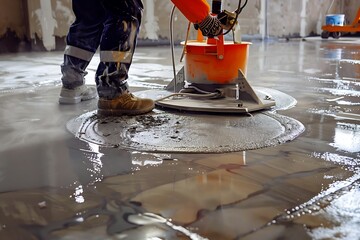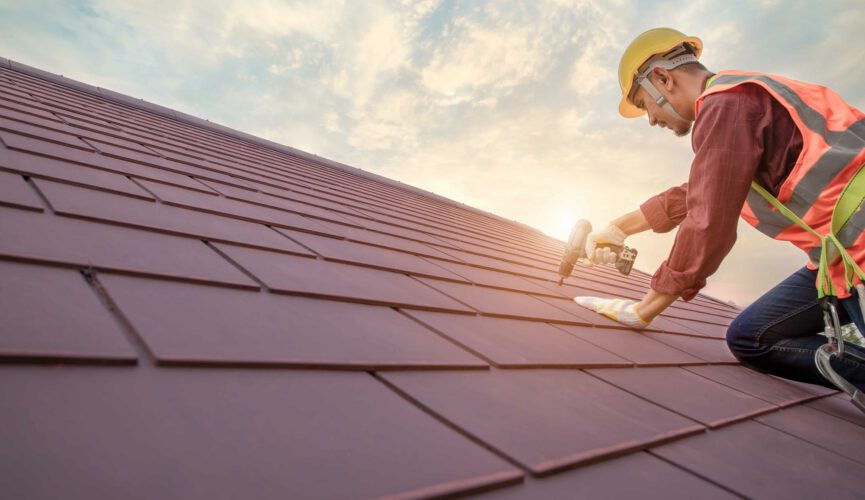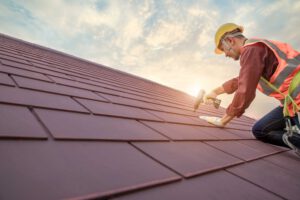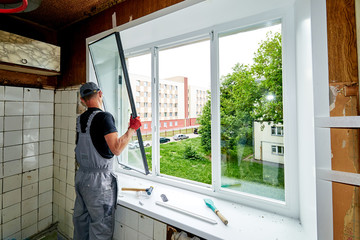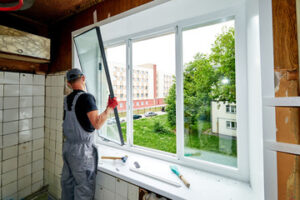Concrete Floor Polishing Orange County is a great no-wax flooring solution that provides an upscale, sophisticated look to your space. This specialized process involves mechanically grinding a concrete surface with diamond-encrusted floor grinding machines to create a desired level of sheen or gloss.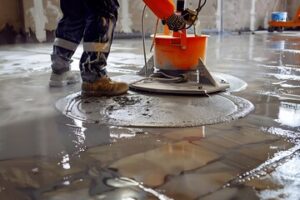
It is essential to begin with the correct grit for your project and then move on to the honing and polishing stages with resin bond diamonds to ensure proper results.
Whether you’re maintaining an existing concrete floor or installing a new one, surface preparation is the first step. It ensures coatings like epoxies, urethanes, and acrylics will mechanically bond to the concrete. There are multiple concrete surface preparation techniques, each with its pros and cons. It’s important to consider them carefully before making a decision.
Full mechanical polishing is a process of grinding, honing and polishing the concrete slab with industrial grinders and a progression of metal-bonded diamond pads, similar to sanding wood. It can achieve a high-gloss shine or a speckled matte finish that exposes aggregate in the concrete. It can also include stains and dyes to change the color of the concrete.
Preparation includes removing any existing coatings or coverings, filling cracks, patching pits and holes, and addressing any areas of delamination on the concrete slab. It’s important that these issues are addressed before starting the grinding and polishing process to prevent a bumpy or uneven surface after the concrete is polished.
If the concrete floor is poured with modern construction techniques, it’s easier to grind and polish than older concrete pours. The quality of the concrete and proper curing methods can make a big difference in the final result.
Once the concrete is fully prepared, it’s time to begin the grinding and polishing process. A planetary grinder is used to remove any existing sealers or coatings and prepare the concrete for a full mechanical polish. Then, a series of progressively finer diamond abrasives is used to grind down the concrete. During this stage, it’s important to wear safety glasses and a dust mask to avoid breathing in the concrete grit. Finally, a concrete densifier is used to increase the hardness of the concrete and aid in the polishing process.
Grinding
Concrete polishing is a multi-step process where a commercial or industrial floor is mechanically ground, honed and polished with bonded diamond abrasives to achieve a desired level of sheen or gloss. The benefits of polished concrete are numerous. It provides a more visually appealing environment and helps cut energy costs by reflecting natural light rather than absorbing it, making it an excellent flooring option in high-traffic areas. It also promotes a positive image by projecting a clean, professional image to customers and employees.
To prepare the floor for grinding, it is cleaned to remove any grease or oils that might impede the smoothing of the concrete. Next, any cracks or chips must be repaired using patching material. Finally, the floor is hardened with a concrete densifier, or densifier solution, which increases the density and toughness of the concrete to allow for more efficient grinding and prevent problems such as rebar expansion and mildew.
After the floor is prepared, coarser grit diamond pads are used to grind the surface until it is smooth and free of any major bumps or pits. Once the concrete is smooth, a chemical densifier is applied to protect the concrete and to help facilitate the honing and polishing steps.
The grinding process then continues to the hone and polishing stages, where finer diamond abrasives are used to create a reflective, high-gloss finish. This step can take several days to complete and requires a great deal of attention to detail.
For a richly textured look, aggregate exposure can be increased, exposing larger pieces of aggregate in the concrete mix for a more rugged, exposed appearance. Stains and dyes can also be added at this stage to create a customized, artistic appearance. Once the final sheen is achieved, the floor is sealed to protect the concrete and enhance its color and luster.
Honing
The concrete processing industry has grown tremendously and is now being embraced by architects, engineers, property owners and general contractors. This new approach to the finish of concrete floors has many advantages over traditional finishes such as epoxy, urethane and vinyl.
The honing process is a multi-step mechanical procedure that grinds and then refines the concrete floor using diamond abrasives. It results in a highly reflective and smooth surface that enhances lighting, reduces dusting and improves safety. It can also provide a canvas for additional decorative enhancements such as acid-stained, integral color, water or solvent-based stains and dyes; saw cut patterns, and engraving.
During the honing stage, the surface of the concrete is smoothed using a series of finer diamond abrasives. This is done to eliminate any scratches left behind from the grinding phase and prepares the concrete for polishing. It is important not to skip any grits in this process as each abrasive is designed to smooth the scratches left behind from the previous step. Once the honed surface is achieved, a densifier can be applied to increase the density of the slab.
Before starting the floor polishing process it is a good idea to have your concrete contractor evaluate the slab and its condition. This assessment can help to identify areas of concern such as excessive carbonation or hydration, which can lead to delamination. It can also help to determine the proper abrasive grit for the job.
Other items to have on hand include protective gear (safety glasses, masks, and ear protection), water for wet grinding and cleaning, a shop vac for wet vacuuming, a sprayer for applying hardeners and densifiers and a floor squeegee and tool holder for application of the sealant.
Polishing
Concrete floor polishing is a multi-step process that involves grinding, honing, and finally, achieving the desired level of sheen. It requires patience and attention to detail, as each step needs to be done thoroughly in order to achieve the desired results. The grinding and honing steps begin with coarse diamond abrasive pads and slowly progress through the finer ones until the desired sheen is achieved.
The level of sheen you choose for your commercial floor will depend on the type of establishment, traffic, and use. Sheens can range from honed to high-gloss. It is also possible to include ornamental decorative saw cut patterns and designs to create a truly unique look. This is a great option for businesses that wish to incorporate their corporate logo, moniker, or other designs into their floor.
During the polishing process, we can also apply colored or dyed concrete to enhance the look of the floor. After the polishing is complete, we can apply a concrete sealant to help protect the surface from stains and wear.
For existing floors that have major flaws, such as pitting and cracking, a concrete resurfacing or overlay may be a better choice. This is an alternative that allows for the repairing of damaged areas and provides a decorative finish that can be stained or colored, includes decorative saw cut or stenciled patterns and can be polished to provide a high-sheen.
Existing concrete slabs can be soft, which requires the application of reactive silicate densifiers to open up the pores and allow for the proper finishing. After the initial grinding process with diamond abrasives, the concrete is then densified and then sealed. This system is often referred to as a “half polish”, because it only processes the concrete through three phases of grinding (half the processing steps required for a full mechanical polish). The chemical densifiers are water-based and odorless, making them a green alternative to waxes.
Sealing
Concrete floors that are polished and sealed provide an elegant and durable flooring solution. The process of polishing concrete involves grinding the floor with ever-finer grits of diamond tooling in multiple steps to create a smooth and shiny finish that can range from a matte or satin surface to a high gloss glassy like shine. The finished surface can be stained and a variety of aggregate or concrete features that have been buried since placement become visible creating a unique, one of a kind floor.
When the floor is in the final honing or polishing stage, a densifier can be applied to harden and strengthen the concrete surface as well as improve its resistance to staining. The concrete can be further sealed with either a topical or penetrating sealer. A penetrating sealer soaks into the pores of the concrete and will last longer than a topical sealer.
It is important to note that older and industrial concrete often contains stains from oil and other vehicle fluids, food stains, red wine and other liquids that are permanent and cannot be removed with the polishing process. These stains can discolor the concrete surface and are best treated by grinding, followed by a topical sealer such as an acrylic or polyurethane.
Many of the pictures on Pinterest with beautiful concrete floors are from projects that have been grinded and sealed rather than polished. This is because a grind and seal is a more cost-effective option than a full concrete polishing. In addition, a grind and seal is less labor-intensive and the time required to complete the project can be significantly shorter than a polished concrete floor. A grind and seal is also the preferred option for many clients that are concerned about crystalline silica exposure and are subject to OSHA regulations.

